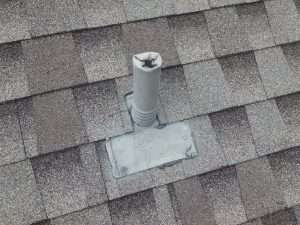The Advantages and Considerations
of Above Ground Septic Tanks
Are you considering installing an above-ground septic tank? If so, you’ve come to the right place. In this blog post, we will provide you with essential information about above ground septic tanks. From their benefits and installation process to maintenance tips, we’ve got you covered. So, let’s dive in and explore the world of above ground septic tanks.
What is an Above Ground Septic Tank?
Definition and Purpose of an Above Ground Septic Tank
An above ground septic tank is a large container made of materials such as concrete, fiberglass, or plastic. It serves as a primary receptacle for raw sewage, where it undergoes an initial treatment process before being further treated or disposed of.
The purpose of an above ground septic tank is to separate solid matter from wastewater, allowing the decomposition of organic materials through bacterial action. This separation of solids helps prevent clogs in the plumbing system and protects the surrounding environment from contamination.
Components of an Above Ground Septic Tank
An above ground septic tank typically consists of the following components:
- Inlet Pipe: This is where the raw sewage enters the tank from the building or property. It allows wastewater to flow into the tank for treatment.
- Outlet Pipe: The outlet pipe is responsible for carrying the treated effluent out of the tank and into the drainfield or further treatment system.
- Baffle: A baffle is a partition or barrier within the tank that prevents the solid waste from flowing directly out of the tank. It helps to retain solids within the tank while allowing effluent to pass through.
- Distribution System: In some above ground septic tanks, a distribution system may be present to evenly distribute the effluent over the drainfield or treatment area. This ensures proper dispersal and prevents overload in a specific area.
- Access Ports and Covers: Above ground septic tanks are equipped with access ports that allow for inspection, maintenance, and pumping. These ports are typically sealed with covers to prevent odors and unauthorized access.
Advantages of an Above Ground Septic Tank
There are several advantages to choosing an above ground septic tank system:
- Ease of Installation: Above ground septic tanks are easier to install compared to traditional underground systems. They require less excavation and can be readily accessed for maintenance.
- Cost-effective: Above ground septic tanks are generally more affordable than underground systems. They require less labor and materials, resulting in cost savings.
- Flexibility: The above ground placement of the tank allows for flexibility in location and ease of relocation if needed. This can be advantageous for properties with limited space or challenging soil conditions.
- Accessibility: Above ground septic tanks are easily accessible for inspection, cleaning, and servicing. This accessibility enhances maintenance and troubleshooting processes, leading to improved system performance.
Advantages of Above Ground Septic Tanks
Environmental Benefits
One of the key advantages of above ground septic tanks is the positive impact they have on the environment. These tanks are designed with advanced technology to promote efficient and safe waste treatment. They utilize a combination of anaerobic and aerobic processes to break down waste materials and remove harmful pathogens, ensuring that the discharged effluent is cleaner and less harmful to the environment.
By using above ground septic tanks, homeowners can play their part in protecting local water sources and ecosystems. With proper maintenance and regular inspections, the risk of groundwater contamination is significantly reduced, creating a healthier and more sustainable environment for all.
Ease of Installation and Maintenance
Compared to in-ground septic systems, above ground septic tanks offer a much simpler installation process. Typically, these tanks can be easily transported to the desired location, without the need for extensive excavation. This not only saves time but also minimizes disruptions to the surrounding landscape.
Maintenance of above ground septic tanks is also relatively straightforward. Since the tanks are easily accessible, routine inspections, cleaning, and repairs can be carried out quickly and efficiently. Homeowners can easily monitor the tank’s condition and address any potential issues before they escalate, ensuring the longevity and optimal functionality of the system.
Flexibility in Placement
Unlike in-ground septic systems, above ground septic tanks provide flexibility in terms of placement. They can be installed in various locations, including areas with high water tables, rocky terrains, or limited space. The design of these tanks allows for adaptability, making them suitable for both urban and rural environments.
Moreover, the flexibility in placement allows homeowners to make the most of their available space. Whether it’s constructing a new property or retrofitting an existing one, above ground septic tanks can be positioned to accommodate specific site requirements and landscaping preferences. This adaptability ensures that homeowners can optimize their property layout without compromising the functionality or efficiency of their septic system.
Overall, above ground septic tanks offer numerous advantages that make them an attractive choice for homeowners. From the environmental benefits to the ease of installation and maintenance, as well as the flexibility in placement, these tanks provide a practical and sustainable solution for managing wastewater effectively.
Components of an Above Ground Septic Tank System
An Above Ground Septic Tank System consists of several key components that work together to efficiently manage and treat household wastewater. Understanding these components will help homeowners maintain their septic system and ensure it operates effectively. In this section, we will explore the tank, filter, pump, and drainfield that make up an above ground septic system.
Tank
The septic tank is the central component of an above ground septic system. It is a large, watertight container made from durable materials like concrete or polyethylene. The tank is buried partially or fully in the ground and serves as a holding chamber for wastewater from toilets, showers, sinks, and other household sources.
Wastewater enters the septic tank through an inlet pipe, and the solid waste settles to the bottom while the lighter materials, like grease and oils, float to the top. Bacteria present in the tank break down these organic solids over time. The remaining liquid, known as effluent, exits the tank through an outlet pipe.
Filter
To ensure that only the treated wastewater leaves the tank, an above ground septic system includes a filter. The filter, often made from high-density polyethylene or synthetic materials, is positioned at the outlet to catch any remaining solid particles before the effluent flows into the drainfield.
The filter’s role is crucial in preventing clogs and protecting the drainfield from becoming overwhelmed with solids. Regular filter maintenance, such as cleaning and replacement as needed, is essential to maintain the system’s functionality.
Pump
In some above ground septic systems, a pump is necessary to move effluent from the septic tank to the drainfield. This is typically required when the drainfield is located at a higher elevation than the septic tank or when the drainfield is positioned far away from the tank.
The pump, often referred to as a septic effluent pump or a sewage ejector pump, efficiently transports the effluent through a series of pipes to the drainfield. It ensures a steady flow of wastewater and helps to distribute it evenly across the drainfield for proper treatment.
Drainfield
The drainfield, also known as a leach field, is where the final treatment and disposal of effluent take place. This component of the above ground septic system consists of a network of pipes or trenches buried in the ground. The effluent is distributed through these pipes, allowing it to seep into the surrounding soil.
Once in the drainfield, the effluent undergoes further treatment as it percolates through the soil. Beneficial bacteria in the soil break down any remaining contaminants, purifying the water before it reenters the groundwater system. Proper maintenance of the drainfield, such as avoiding heavy traffic or planting deep-rooted trees nearby, ensure its longevity and effectiveness.
Choosing the Right Above Ground Septic Tank
Size and Capacity Considerations
Determining the correct size and capacity of an above ground septic tank is essential for its proper functioning and longevity. Here are a few factors to keep in mind:
- Household Size: Consider the number of people in your household, as this directly impacts the amount of wastewater generated. Larger households typically require a septic tank with a higher capacity.
- Water Usage: Assess your water consumption habits, including the frequency of laundry, showers, and dishwashing. Higher water usage may necessitate a larger tank to accommodate the increased volume of wastewater.
- Soil Conditions: Evaluate the composition and drainage capacity of your soil. Different soil types have varying absorption rates, necessitating adjustments in tank size to prevent overloading or inadequate treatment.
- Local Regulations: Check the local building codes and regulations to ensure compliance with their specific requirements regarding septic tank sizing.
Material Options
Above ground septic tanks are available in different materials, each with its own set of benefits. Here are a few common options to consider:
- Fiberglass: Known for its durability, fiberglass septic tanks are resistant to corrosion, lightweight, and easy to transport and install. They have a longer lifespan compared to other materials and are suitable for a wide range of soil conditions.
- Polyethylene: Polyethylene tanks are affordable, lightweight, and resistant to cracks and leaks. They are relatively easy to install and have a long life expectancy. Additionally, polyethylene tanks provide excellent resistance to chemicals and environmental factors.
- Concrete: Concrete septic tanks are known for their strength and durability. They can withstand heavy loads and are less prone to floating in high groundwater areas. Concrete tanks also offer better resistance to fire and require less maintenance.
Regulatory Requirements
Before installing an above ground septic tank, it is crucial to understand and adhere to the regulatory requirements set by local authorities. Here are a few key considerations:
- Permits and Inspections: Determine the permits required for the installation or replacement of a septic tank and ensure that the necessary inspections are carried out at each stage of the process.
- Setback Requirements: Familiarize yourself with the setback requirements, which dictate the minimum distance between the septic tank and buildings, wells, water bodies, or property lines. Adhering to these requirements ensures environmental and public health safety.
- Maintenance and Pumping: Many jurisdictions have regulations outlining the frequency of septic tank maintenance and pumping. Comply with these regulations to prevent system failures and maintain optimal performance.
Installation Process of an Above Ground Septic Tank
Site Preparation
Before installing an above ground septic tank, it’s important to properly prepare the site. Here are the key considerations:
- Location: Choose a location that meets the local regulations and guidelines for septic tank installation. Ensure that it’s easily accessible for maintenance and pumping.
- Permitting: Check with your local authorities to obtain the necessary permits for installation. This step is essential to comply with legal requirements.
- Clear the area: Remove any vegetation, debris, or obstacles from the site to create a clear space for the tank placement.
Tank Placement and Anchoring
Once the site is prepared, it’s time to place and anchor the above ground septic tank. Here’s what you need to do:
- Positioning: Carefully position the septic tank on the prepared site, ensuring it is level and stable. Follow the manufacturer’s instructions for proper placement.
- Anchoring: Secure the tank in place using appropriate anchors or straps. This step is crucial to prevent movement or shifting of the tank over time.
- Backfilling: Gradually backfill the area around the tank with soil, ensuring proper compaction. This will provide stability and support to the tank.
Connection to Plumbing System
The final step in the installation process is connecting the above ground septic tank to the plumbing system. Here’s what you need to know:
- Inlet and Outlet Connections: Connect the main plumbing lines from your home to the appropriate inlet and outlet pipes of the septic tank. Ensure a secure and watertight connection using approved fittings.
- Ventilation: Install ventilation pipes to prevent pressure buildup and allow proper air circulation within the septic system. This is essential for optimal functioning.
- Inspection and Testing: Before covering the tank, inspect all connections for leaks and perform a water test to ensure proper flow and drainage. Address any issues promptly to avoid future problems.
Maintenance and Care for Above Ground Septic Tanks
Maintaining and caring for your above ground septic tank is crucial to ensure its proper functioning and longevity. Regular inspection and pumping, proper waste disposal practices, and monitoring and troubleshooting are essential aspects of septic tank maintenance. By following these practices, you can avoid costly repairs and prevent potential health and environmental hazards.
Regular Inspection and Pumping
Regular inspection and pumping of your above ground septic tank are vital to identify any issues early on and prevent them from escalating. A professional septic tank service should conduct a thorough inspection at least once every three years, but it’s recommended to schedule inspections annually for above ground tanks due to their exposure to external elements.
During the inspection, the technician will examine the tank’s structural integrity, check for leaks, inspect the drain field, and ensure proper functioning of components such as baffles and filters. Pumping will also be performed to remove accumulated solid waste and sludge that can hinder the tank’s efficiency.
Proper Waste Disposal Practices
To maintain the health of your above ground septic tank, it’s crucial to practice proper waste disposal habits. Avoid flushing non-biodegradable items such as diapers, sanitary products, cigarette butts, or grease down the drain. These can clog the pipes and potentially damage the tank’s components.
Be mindful of the types and quantities of chemicals you use in your household. Harsh chemicals like bleach or drain cleaners can disrupt the natural bacteria balance within the tank, impairing its ability to break down waste effectively. Opt for eco-friendly alternatives whenever possible.
Monitoring and Troubleshooting
Regular monitoring and troubleshooting can help catch potential issues before they become major problems. Keep an eye out for signs of septic tank trouble, such as slow draining sinks or toilets, foul odors around the tank, or wet areas near the drain field. These could indicate a blockage or malfunctioning components that require attention.
If you notice any of these signs, it’s best to contact a professional septic tank service to diagnose and rectify the issue promptly. Attempting DIY repairs can often exacerbate the problem and lead to costly repairs down the line.
Cost Considerations of Above Ground Septic Tanks
Initial Investment
When it comes to above ground septic tanks, the initial investment includes the cost of purchasing the tank itself, along with installation expenses. The price of the tank will depend on its size, material, and features. In general, above ground septic tanks tend to be more affordable compared to their underground counterparts. However, keep in mind that additional costs such as excavation, plumbing connections, and permits may also be incurred during installation.
Operational Expenses
Operational expenses are another crucial aspect of considering the cost of above ground septic tanks. One primary expense to keep in mind is the pumping and disposal of waste. Regular pumping is necessary to maintain the proper functioning of the tank. The frequency of pumping will depend on factors such as the tank’s size, household usage, and local regulations.
Above ground septic tanks require electricity to power the necessary components, such as pumps and aerators. It’s important to consider the energy consumption and associated costs when budgeting for the operational expenses of your system.
Long-term Maintenance Costs
Long-term maintenance costs are an ongoing consideration with above ground septic tanks. These tanks require periodic inspections to ensure they are functioning effectively and to identify any potential issues. The maintenance activities may include checking for leaks, inspecting the tank’s structural integrity, and assessing the condition of components like pumps and filters.
It’s also important to budget for potential repair costs that may arise over the lifespan of the septic tank. Whether it’s replacing a faulty pump or repairing a damaged component, having funds set aside for unexpected maintenance is essential to keep your system running smoothly.
Note: The above information is for illustrative purposes only and should not replace professional advice. Costs may vary depending on various factors, including location, tank size, and specific requirements.
Conclusion
In conclusion, the above ground septic tank is a practical and efficient solution for properties where traditional underground tanks are not feasible. It offers several advantages, including easier installation and maintenance, cost-effectiveness, and greater accessibility for inspections and repairs. Moreover, the use of durable materials ensures longevity and durability, making it a reliable option for long-term use.
By considering the specific needs and requirements of your property, as well as local regulations and guidelines, you can choose the most suitable above ground septic tank system. Remember to consult with a professional to ensure proper installation and adherence to safety standards.
Incorporating an above ground septic tank into your property can help ensure a reliable and efficient waste management system. With regular maintenance and proper care, it will function effectively for years to come, providing peace of mind and contributing to the overall functionality and value of your property.

_edited1.jpg?etag=%2252a0c-5c63e375%22&sourceContentType=image%2Fjpeg)




